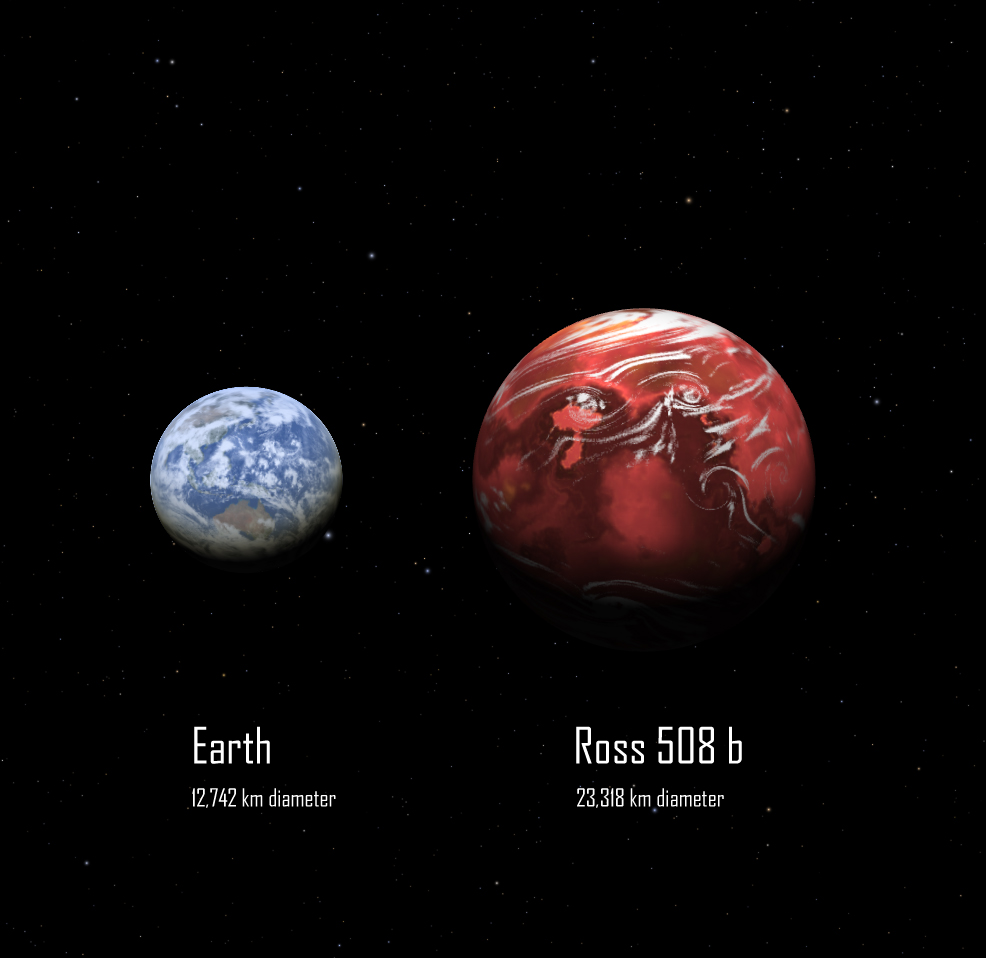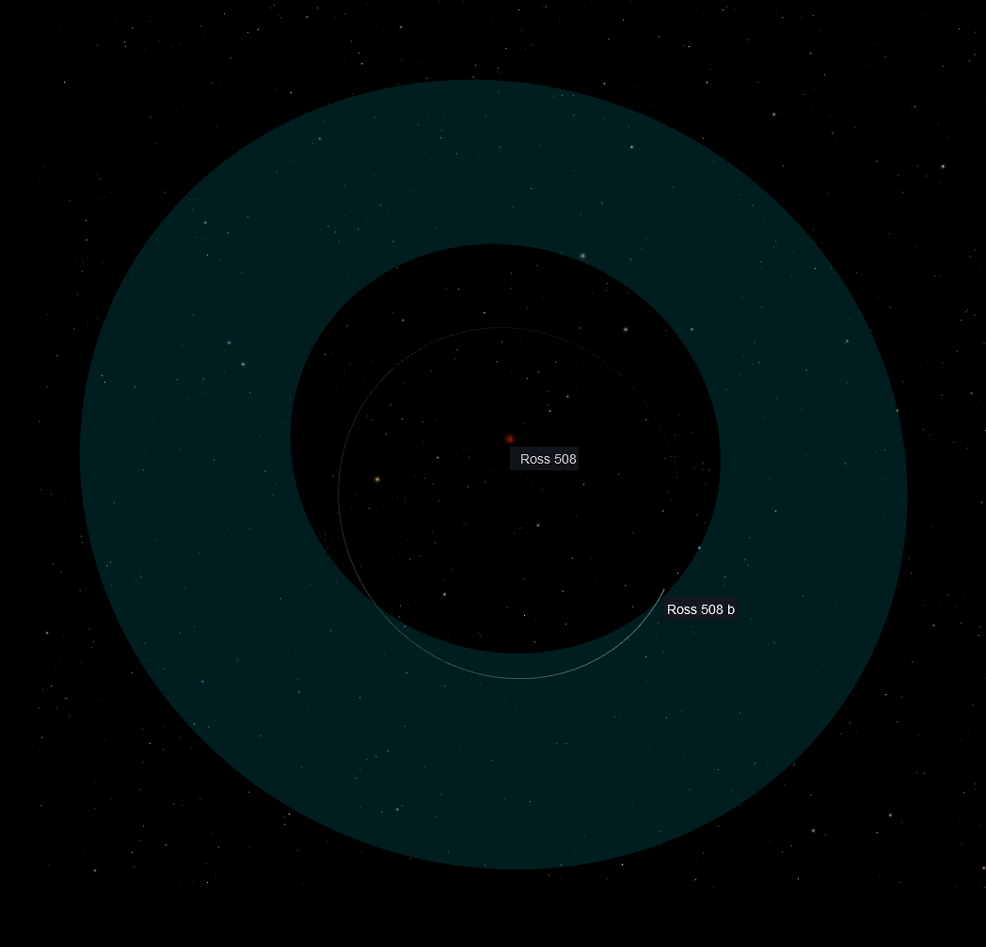
10th August 2022 Super-Earth found "skimming" habitable zone of red dwarf The discovery of a super-Earth around the red dwarf Ross 508 is reported by astronomers in Japan. Part of the planet's elliptical orbit takes it within the star's habitable zone, where liquid water may exist.
A super-Earth has been found skimming the inner edge of the habitable zone around Ross 508, a red dwarf star only 37 light-years from Earth. This marks the first discovery by a new instrument on the Subaru Telescope – the flagship telescope of the National Astronomical Observatory of Japan. With such a successful first result, astronomers now anticipate many more, potentially even better, candidates for habitable planets around red dwarfs. Accounting for 76% of main-sequence stars in the Milky Way, red dwarfs are smaller than the Sun and abundant in our stellar neighbourhood. As such, they are important targets in the search for nearby exoplanets and extraterrestrial life. They are relatively cool, however, emitting little visible light compared to other types of stars, which makes it difficult to view them. At infrared wavelengths, red dwarfs are brighter. To improve the ability to study them, Japan's Astrobiology Center developed the InfraRed Doppler (IRD). Mounted on the Subaru Telescope, this new instrument is the world's first high-precision, infrared spectrograph for telescopes in the 8-10 metre size class. The transit method – used for 3,900 of the over 5,000 total exoplanet discoveries to date – can only detect planets whose orbits pass directly in front of their parent star to an observer on Earth. By contrast, the IRD on the Subaru Telescope uses the Doppler technique. This can detect planets regardless of line of sight, by sensing minute "wobbles" in a star's velocity. Its accuracy is so high, it can spot differences equivalent to the speed of a person walking. Ross 508 b, the newly discovered planet in the Ross 508 system, is about 1.8 times the diameter of Earth and has four times its mass. Its average distance from the central star is just 0.05 AU (8 million km), or a mere 1/8th of that between our Sun and Mercury. However, Ross 508's cooler temperature and smaller size than our Sun means that its habitable zone is much closer in range than that within our Solar System.
Data from the IRD shows that the planet's 11-day orbit is elliptical, meaning that for part of its orbit, Ross 508 b would pass through the habitable zone where conditions are right for liquid water to exist on the surface. Whether or not there is actually water or life are questions for further study. It will be one of the targets for next-generation telescopes of 30 metres and larger size classes. "Ross 508 b is the first successful detection of a super-Earth using only near-infrared spectroscopy," said Hiroki Harakawa, lead author of a paper that appeared recently in Publications of the Astronomical Society of Japan. "Prior to this, in the detection of low-mass planets such as super-Earths, near-infrared observations alone were not accurate enough, and verification by high-precision line-of-sight velocity measurements in visible light was necessary. This study shows that IRD alone is capable of detecting planets, and clearly demonstrates the advantage of IRD in its ability to search with a high precision even for late-type red dwarfs that are too faint to be observed with visible light. "It has been 14 years since the start of IRD's development," added Harakawa. "This discovery was made possible by the high instrumental performance of IRD, the large aperture of the Subaru Telescope, and the strategic framework of observations that enabled intensive and frequent data acquisition. We are committed to making new discoveries."
Comments »
If you enjoyed this article, please consider sharing it:
|








